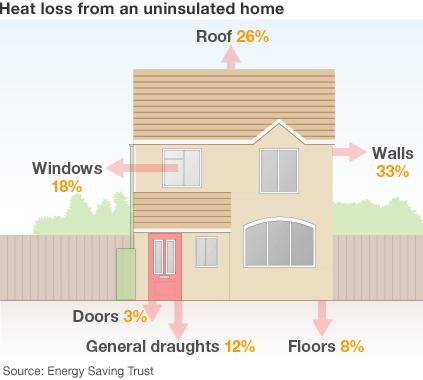Powering Britain: How can we save energy in our own houses?
- Published
Watch Joe's final Powering Britain report
Newsround's Powering Britain series has been taking a look at how we make energy in the UK.
But instead of getting it from power stations and fossil fuels, could our own houses create all the power we need?
In Joe's final report he visits a house that's been called 'Britain's Greenest Home'.
Not only does he find out how energy can be saved but also how it can be created right under your own roof.
How to have a greener home
There are many ways houses can be made more eco-friendly.
One way is to fit PV solar panels which use the sun's light and heat to make electricity. Although they cost a lot to install - around £15,000 - they generate enough power to pay that back after about 10 years. The government pays people for every unit of electricity made with PV panels.
The Energy Saving Trust (EST) says the average household could save about £280 a year by being more energy efficient. The average bill is about £1,300, so that's a big saving - the same as more than a tonne of carbon emissions every year.
There are plenty of ways to save energy without spending too much money.
A simple hot water tank cover can cost as little as £10-£15 but it could save three times of that in a single year.
House owners can also have cavity-wall insulation and loft insulation fitted, which is a few hundred pounds. This improves the efficiency of heating systems and helps to avoid wasting energy.
You can also use simple strips of rubber to improve the seal around doors and windows. This stops energy escaping and being wasted.

Other ways to save energy are to check that boilers, fridges, freezers, and televisions are energy-efficient.
They have ratings from A to G (where A is the best) to show how good they are.
LED televisions are better than LCD or Plasma televisions.
Some appliances like washing machines and dishwashers also have top ratings of A+++, A+ and A.
